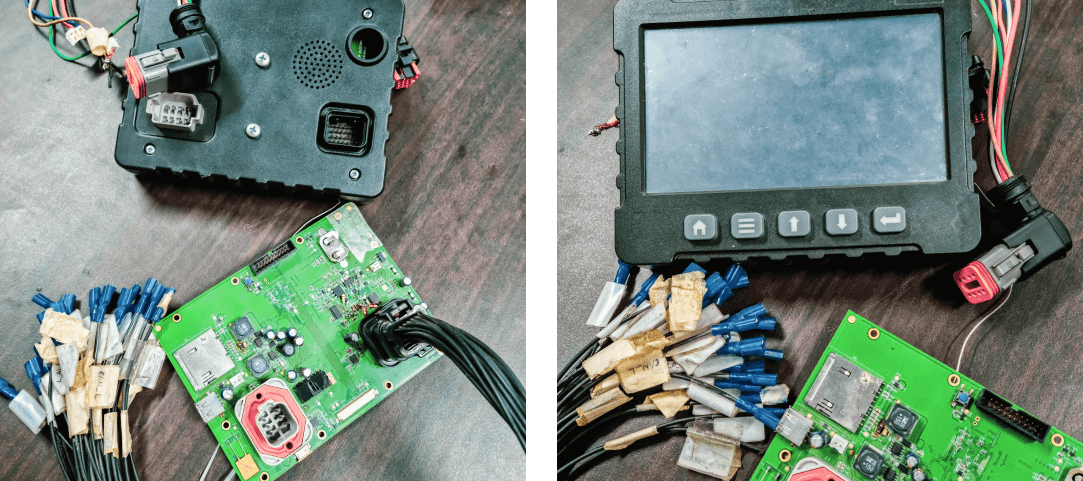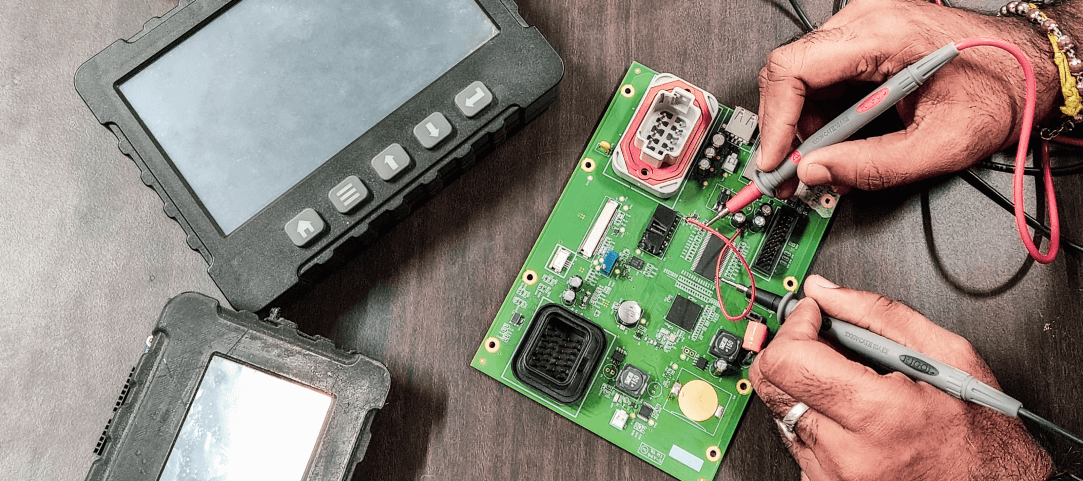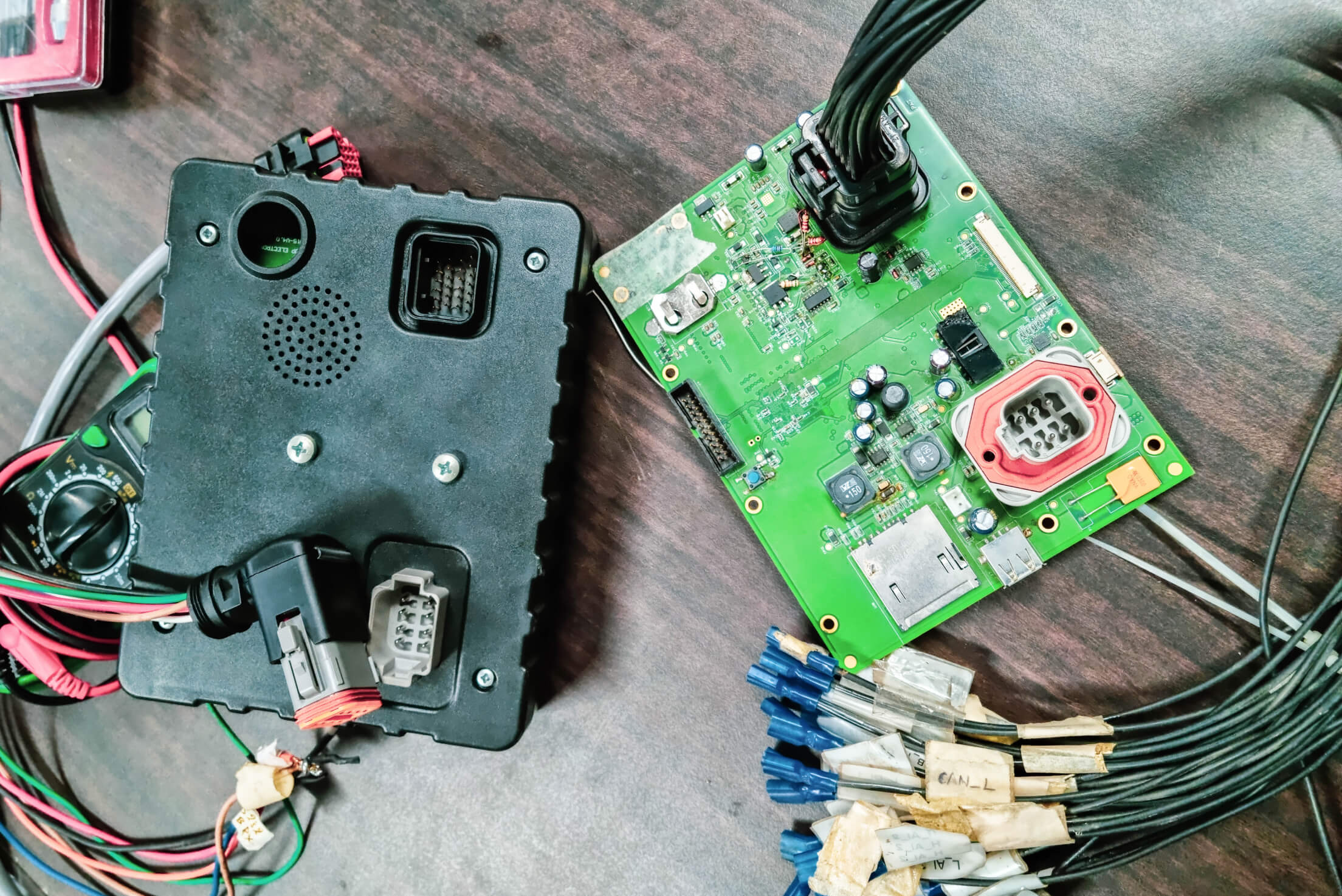T
he agriculture monitoring device is a sophisticated tool designed to enhance farming operations through precise data collection and real-time monitoring.
This device integrates various advanced components and interfaces, ensuring comprehensive data management and connectivity to improve crop yield and resource management.
_____________________
Key Components
LCD Touch Display:
A high-resolution LCD touch display allows farmers to interact with the device intuitively, view real-time data, and configure settings on-site. The touch interface facilitates easy navigation through various menus and options, making it user-friendly even for non-technical users.
SD Card:
An SD card slot is included for data storage, allowing for extended periods of data logging and easy data transfer. The SD card stores historical data, which can be analyzed to identify trends and improve farming practices.
NOR Flash:
The device is equipped with NOR flash memory to store firmware and critical data securely. NOR flash provides fast read times and reliable non-volatile storage, essential for firmware integrity and performance.
RS232 Interface:
The RS232 serial interface ensures compatibility with various legacy systems and sensors. It enables straightforward serial communication for data exchange and control operations.
Ethernet Port:
An Ethernet port facilitates network connectivity, allowing the device to communicate with other systems and the internet. This enables remote monitoring, data upload to cloud services, and integration with farm management software.
JTAG Interface:
JTAG (Joint Test Action Group) interface is included for debugging and programming purposes. It allows developers to test and troubleshoot the hardware and software efficiently.
USB Port:
The USB port offers another method for data transfer and device configuration. It supports connecting to computers for data analysis, firmware updates, and peripheral expansion.
CAN/ISO Bus:
The device supports CAN (Controller Area Network) and ISO Bus for robust communication with various agricultural machinery. These interfaces ensure compatibility with modern precision farming equipment, enhancing the device's versatility.
A high-resolution LCD touch display allows farmers to interact with the device intuitively, view real-time data, and configure settings on-site. The touch interface facilitates easy navigation through various menus and options, making it user-friendly even for non-technical users.
SD Card:
An SD card slot is included for data storage, allowing for extended periods of data logging and easy data transfer. The SD card stores historical data, which can be analyzed to identify trends and improve farming practices.
NOR Flash:
The device is equipped with NOR flash memory to store firmware and critical data securely. NOR flash provides fast read times and reliable non-volatile storage, essential for firmware integrity and performance.
RS232 Interface:
The RS232 serial interface ensures compatibility with various legacy systems and sensors. It enables straightforward serial communication for data exchange and control operations.
Ethernet Port:
An Ethernet port facilitates network connectivity, allowing the device to communicate with other systems and the internet. This enables remote monitoring, data upload to cloud services, and integration with farm management software.
JTAG Interface:
JTAG (Joint Test Action Group) interface is included for debugging and programming purposes. It allows developers to test and troubleshoot the hardware and software efficiently.
USB Port:
The USB port offers another method for data transfer and device configuration. It supports connecting to computers for data analysis, firmware updates, and peripheral expansion.
CAN/ISO Bus:
The device supports CAN (Controller Area Network) and ISO Bus for robust communication with various agricultural machinery. These interfaces ensure compatibility with modern precision farming equipment, enhancing the device's versatility.

_____________________
Project Execution
Schematic Capture:
The project begins with the schematic capture, where the electrical connections and components are precisely defined. Advanced CAD software is used to create accurate and detailed schematics, ensuring all components are correctly interfaced.
PCB Layout Design:
Following the schematic capture, the PCB (Printed Circuit Board) layout design phase involves placing components and routing connections on the board. The layout is optimized for signal integrity, power distribution, and thermal management to ensure reliable operation in various environmental conditions.
Prototype Build:
After finalizing the PCB design, prototypes are built to validate the design and functionality. Prototypes undergo rigorous testing, including functional tests, environmental tests, and performance evaluations. Any issues identified during testing are addressed, and the design is iterated until it meets all requirements.
The project begins with the schematic capture, where the electrical connections and components are precisely defined. Advanced CAD software is used to create accurate and detailed schematics, ensuring all components are correctly interfaced.
PCB Layout Design:
Following the schematic capture, the PCB (Printed Circuit Board) layout design phase involves placing components and routing connections on the board. The layout is optimized for signal integrity, power distribution, and thermal management to ensure reliable operation in various environmental conditions.
Prototype Build:
After finalizing the PCB design, prototypes are built to validate the design and functionality. Prototypes undergo rigorous testing, including functional tests, environmental tests, and performance evaluations. Any issues identified during testing are addressed, and the design is iterated until it meets all requirements.
_____________________
Conclusion
The agriculture monitoring device, with its comprehensive suite of interfaces and advanced features, represents a significant advancement in precision farming technology. By integrating an LCD touch display, SD card, NOR flash, RS232, Ethernet, JTAG, USB, and CAN/ISO Bus, the device offers robust data management and connectivity options. The execution of the project, from schematic capture and PCB layout design to prototype build, ensures a reliable and high-performing solution for modern agriculture.
_____________________

